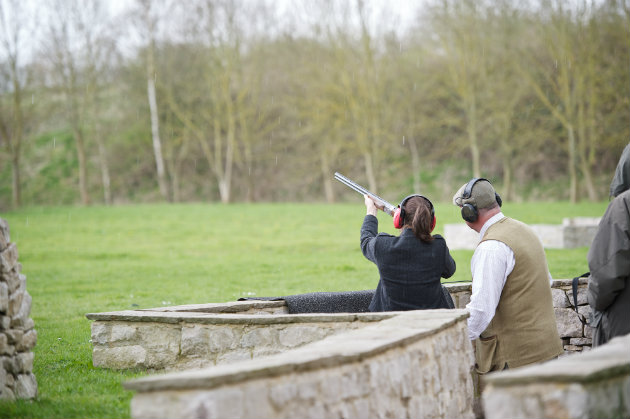A look at three second-hand, low recoil guns
It surprises me that sensitivity to recoil seems to have little to do with physical build. I’ve met guys built…
Win CENS ProFlex DX5 earplugs worth £1,149 – enter here

Unfortunately many people are put off shooting early in their career due to having a bad experience with gun recoil. That is a shame, because gun recoil is definitely manageable so that it doesn’t present a problem to the shooter.
The trick is to fit the gun and the shooter together correctly – which is something an experienced shooting instructor would be able to advise on.
The trouble is many people are introduced to shooting on a clayshooting day – classically as part of an exercise in ‘team building’. The clayshooting ground may not have an instructor experience in gun fit and just hand over a gun for the clayshoot without looking at who will be using it.
As a result the would-be shooter gets a strong kick back, possibly a bruised face and an aversion to shooting in the future.
I’ve heard this more times than I care to think about and it’s very frustrating that so many would-be shooters are put off at such an early stage. So here’s what I advise to manage gun recoil so it isn’t an issue.
Many shooters consider that a 20-bore has less recoil than a 12-bore but in fact, the recoil depends on the cartridge load being used and the weight of the gun.
It surprises me that sensitivity to recoil seems to have little to do with physical build. I’ve met guys built…
Q: I really hope you can help me. I am tired of getting a bruised cheek from a shotgun. I…
Q: I took up shooting with my boyfriend 18 months ago. I started with a Miroku Sporter but found the recoil too painful and suffered recoil bruises to my lower shoulder. I now use a semi-auto which has helped a little, but I would like to go back to the over-and-under. Would it stop the bruising if I had it fitted with a recoil pad?
A: A decent recoil pad or recoil reduction system would almost certainly help ease the pain, but first you need to discover what’s wrong with the stock you shoot with.
From what you’ve said I would put money on it not having enough cast at toe to sit comfortably above your breast, and seat properly into your shoulder pocket. In other words the toe of the stock needs to be turned (or cast) outward to keep it clear of the breast. This work can easily be done by a gunsmith who will also round off the stock’s heel to make it easier to mount the gun smoothly and properly.
Q: As a lady, should I use a 12-bore to reduce recoil? I’ve spoken to other women who shoot and they use heavier 12-bores to get over the problem. Trouble is, my husband won’t listen to me changing guns because, he says, the 20 is a lady’s gun. What do you think?
A: 12 and a 20-bore are pretty much identical when it comes to performance but the lighter gun can tend to recoil a little more with 28gm competition cartridges. This might not be too much of a problem on a game shoot but the effects do become noticeable if a fair number of cartridges are fired in quick succession, as at a clay shoot.
What you need to remember is that recoil doesn’t have to be excessive to bring about a drop in performance, missed targets and tiredness. The cumulative effect of firing 100 cartridges even with ‘average’ levels of recoil in a day will produce the same result. In really bad cases recoil can also cause a shooter to start flinching and create triggering troubles.
Get the latest news delivered direct to your door
Discover the ultimate companion for field sports enthusiasts with Shooting Times & Country Magazine, the UK’s leading weekly publication that has been at the forefront of shooting culture since 1882. Subscribers gain access to expert tips, comprehensive gear reviews, seasonal advice and a vibrant community of like-minded shooters.
Save on shop price when you subscribe with weekly issues featuring in-depth articles on gundog training, exclusive member offers and access to the digital back issue library. A Shooting Times & Country subscription is more than a magazine, don’t just read about the countryside; immerse yourself in its most authoritative and engaging publication.

